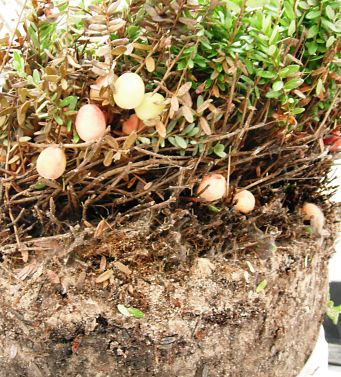Reduced Risk IPM Tactics

Pheromone-based mating disruption
Trials of a pheromone blend targeting the top three lepidopteran pests in Wisconsin cranberry (blackheaded fireworm, cranberry fruitworm, and Sparganothis fruitworm) were conducted in 2012 and 2013. The pheromone carrrier is a paraffin emulsion, trademarked as SPLAT (Specialized Pheromone & Lure Application Technology).
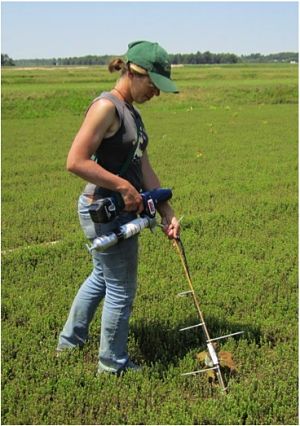
Benefits of SPLAT:
- Viscous, inert, food-grade wax emulsion
- Slowly releases pheromone components
- High point-source density
- Biodegradable
- Can be certified organic
- Mechanical application
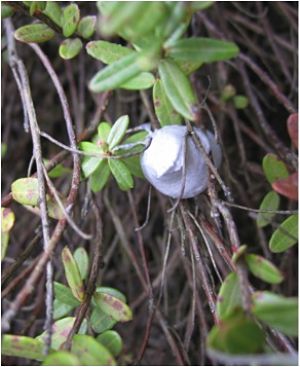
Flooding as an IPM tactic
Field study: submergence tolerance
In 2011 we did the “bug flood” project to examine the effects of a mid-spring flood on the cranberry plant, as well as on key insect species. Timing of the flood (for fireworm egg-hatch) and duration of submergence were key factors in the study. A total of 46 commercially managed beds were included in the study (11 growers). Findings suggest that a 30-40 hour flood may cause mild stress to the plant, causing reductions in flowers/upright, but by fall, harvestable biomass was similar among flooded and non-flooded beds. Black-headed fireworm flights were significantly reduced in flooded beds.
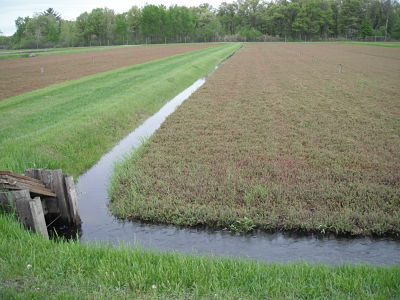
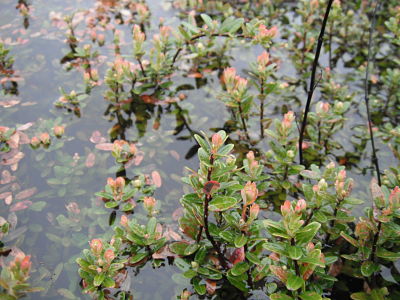

Greenhouse study: submergence tolerance
In addition to assessing plant tolerance to submergence conditions in the field, we wanted to measure absolute tolerance of cranberry. In greenhouse trials we assayed which factors drive the submergence tolerance of cranberry varieties. Three cranberry varieties common in Wisconsin (‘Ben Lear,’ ‘Stevens,’ and ‘GH1’) were examined, and water temperature (cool, warm) and submergence duration (0, 48, and 96 hours) were fully crossed. Plants were followed for two months post-submergence to track long-term effects.
If you are interested in learning more about this project, see our presentation on it:
Early-season flooding for insect pest control
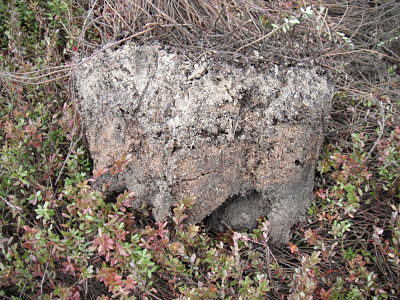
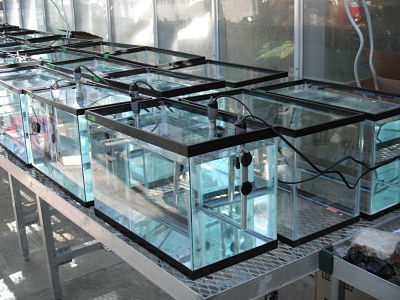

Flooding, continued
We did another study looking at the types and numbers of arthropods removed from beds along with “trash” in the spring trash floods. This is when growers briefly flood beds to get decomposing plant matter out. See page 3 in Volume XXV Issue 7 of Cranberry Crop Management Newsletter for our article on it:
Removal of Arthropods in the Spring “Trash Floods”
Cranberry flea beetle biology and management (ongoing project)
Newly Funded Research May Help Squash Major Cranberry Pest: click here to read WPR’s coverage of the Steffan lab’s exciting news about flea beetle research.
Collaborators:
Tim Dittl, Agricultural Scientist, Ocean Spray Cranberries, Inc.
Jayne Sojka, Owner and Consultant, Lady Bug IPM
ISCA Technologies, Riverside, CA, USA

